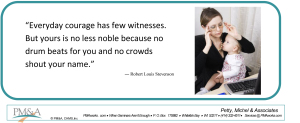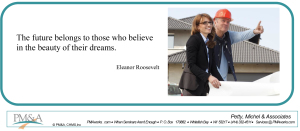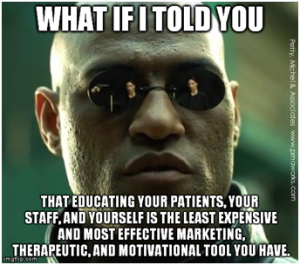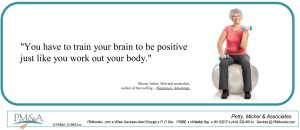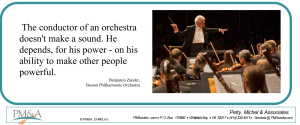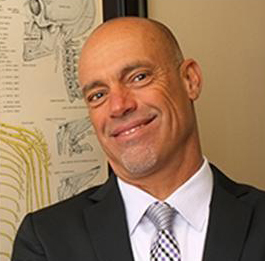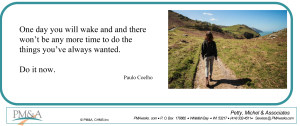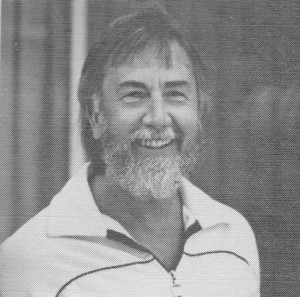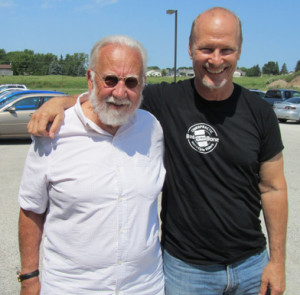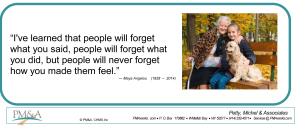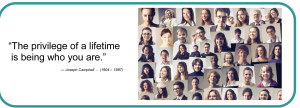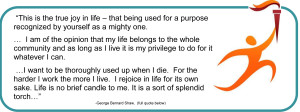The best chiropractic businesses excel at the basics. Too often we can take the fundamentals of practice excellence for granted and go off to chase the “shiny” things, forsaking the powerful potentials right in front of us.
So here is an organic reminder that you, and all of us, can immediately put to use to help us keep growing and groovin’.
Most of us enjoy spring…flowers blooming, birds singing. It is new. It is creative. It is a beginning.
Life goes in cycles – everything has a beginning, a progression, and an ending. Some cycles are longer – every twelve months the tulips come through the winter mud. Some are shorter – each day the sun comes up and we have a new cup of coffee. But nature endures through cycles.
Unfortunately, we don’t always follow nature in our offices.
If you are like most of us, you don’t really start your day. It sort of happens and you just go along. You walk into the office a see what the appointment book offers you. Based upon the urgencies of the morning, you make your way through to the afternoon until you can leave to go home in the evening. But do you really end your day or does it linger with you as you go home, or even stay with you till the next morning?
Most of us are stuck in the blur of stretched out cycles that are blended one moment to the next so that there is never any real beginning or never any real ending. One phone call in the middle of a busy afternoon is very similar to the one you had in the morning…everyday for the last three years. This adjustment to this patient is just too similar to the one you gave…3,000 times before. One moment blurs to the next.
Jim Parker, of Parker Seminars, used to talk about “PTC”, Present Time Consciousness, as a key element to practice success. A practice can suffer because, over time, our consciousness gets stuck in past moments, strung out so that we have less consciousness in the here and now. When you greet your patient, you are not as “here” or as conscious in the present as you might have been the first month you were in practice, or the first week you were on the job. And your patients know it, at least on a subliminal level. They can have a sense that you are disinterested in them and so end up leaving and looking for a doctor who is.
Each encounter with each patient should be new. It should be its own cycle. Each phone call, each adjustment should be unique, separate, as if it has never happened before.
The Japanese have a name for this: “Ichi-go Ichi-e.” Roughly, It means “one time, one meeting” — that this one time will never happen again. It is its own time. It is special.
What would happen to your practice if each day – today – was brand new? Like spring. If this week was the first week you were finally able to see patients after years of preparation?
First of all, you wouldn’t be bored. You wouldn’t be burned out, worried, or angry. Why? Because you are just starting and you have a chance to create the practice anyway you want.
So, what causes us to lose our “PTC” and fall into doldrums? How can we stay in the “now” and be creative each moment we are with our patients, each other, and our loved ones outside of practice?
First, watch out for the backlogs. They are energy dumps. Try to complete your work when you are doing it. Patient notes, insurance reports, filing…try to get it all done as soon as possible. You see, when you start to put your consciousness into a cycle you don’t really get all of it back until you complete that cycle. So, every pile of paperwork and partially completed job that is lying around the office will gradually draw your attention into the past.
Spend a weekend applying the 4 D’s: With each task: Get it DONE, or DELEGATE it, or DUMP it in the trash can. Not all jobs can be completed now, and so some can be DELAYED with a time noted to complete it.
Here are some other steps to make each moment new:
- Early to Rise. Begin your day a little earlier… with a walk or a book, some music, meditation or prayer.
- Morning Group Planning. Begin your day in the office with a case management meeting, reviewing who is coming in, what special actions need to be coordinated. Maybe add a joke to keep things from getting serious.
- End Each Encounter. After each patient contact, end the meeting in your mind.
- Interest. With each new patient contact, genuinely find something interesting and new about them – their appearance, their week, something about their story.
- Business Coach. Meet with your business coach and review your business and make plans for the next month.
- Get Away. Get away on a vacation with your spouse, or a sabbatical and seminar for yourself. ( I’m heading out to Cal Jam this week. Hope to see you there!)
- Un-Serious. Do things in your office that are different, fresh, and new. One office has a “fruity Friday” and offers fruit to the patients. Avoid the deadly disease of “seriousness.” Tell a joke, be silly.
- The Four D’s (again): Do it, Dump it, Delegate it, Delay it. Avoid backlogs.
Some of this takes discipline and creating rituals to help ensure these actions take place
But you are part of nature and spring is already in your heart. You just have to let it out, like a song that is ready to be sung or a jig ready to be danced. You already have the creative spark of newness inside you.
So just breathe.. and let your spring happen today and each day. And help others to do the same.
Carpe Diem and Happy Spring!
–Ed

